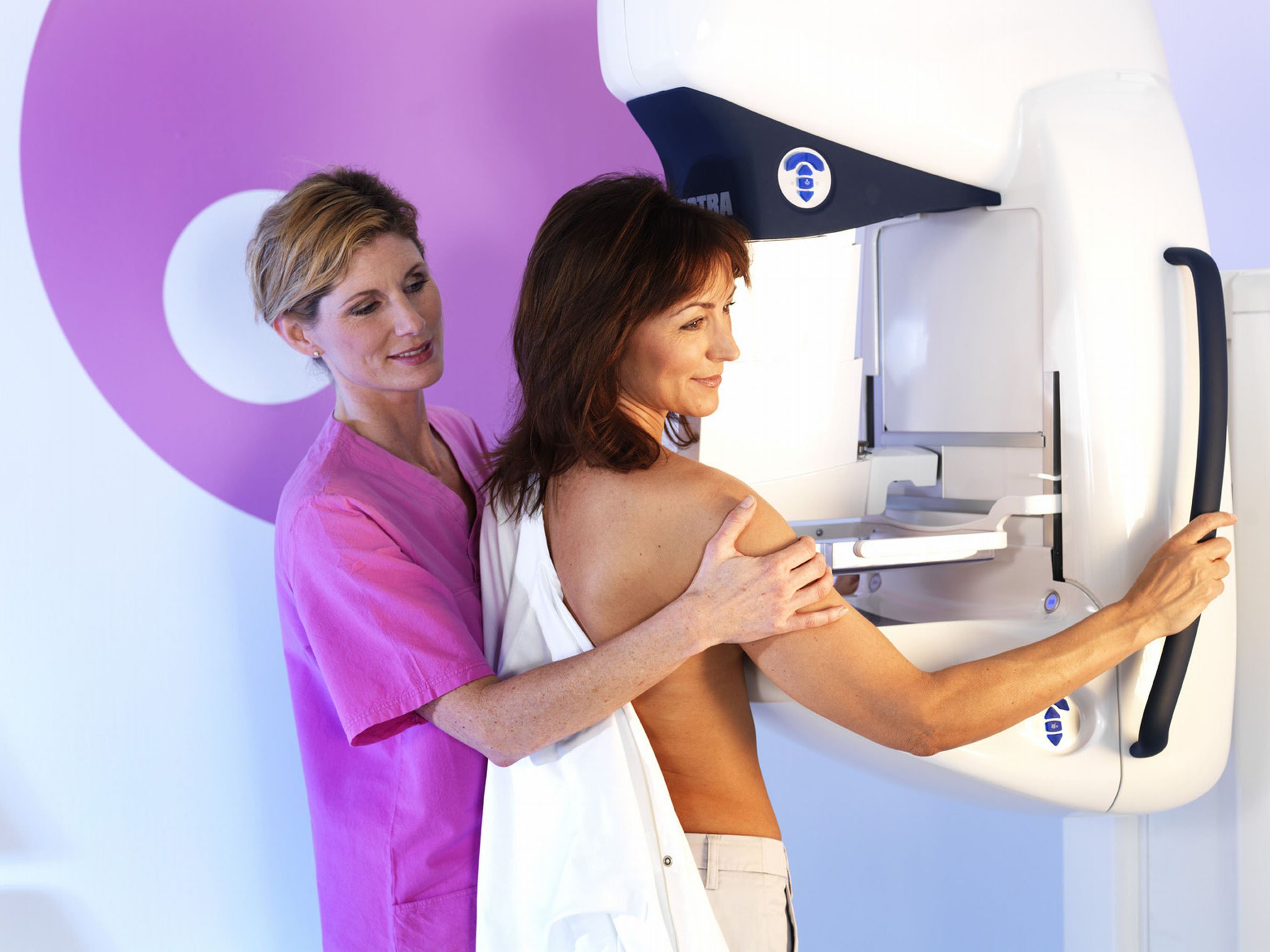
February 11, 2015 — Breast cancer patients who undergo a mastectomy should receive subsequent radiation treatment if their cancer has spread to four or more nearby lymph nodes. However, according to a new study, only 65 percent of these women are getting the recommended postmastectomy radiation therapy (PMRT). The researchers looked at nearly 57,000 cases of breast cancer, and their study has been published as an "article in press" on the Journal of the American College of Surgeons website.
Several studies have found that PMRT reduces the risk of breast cancer recurrence and improves survival in patients whose cancer is "locally advanced" with a pathologic stage of N2 or N3 using the American Joint Committee on Cancer (AJCC) staging system. The AJCC defines N2 cancer primarily as having spread to between four and nine axillary, or underarm, lymph nodes but no other organs; N3 disease involves 10 or more axillary lymph nodes.
"My colleagues and I were quite startled by the finding that a third of patients with N2/N3 disease did not receive PMRT, which is the standard of care," said lead author Quyen D. Chu, M.D., MBA, FACS, professor of surgery at Louisiana State University Health Sciences Center, Shreveport.
Since 2000, the National Cancer Institute and the American Society of Clinical Oncology have recommended PMRT, in addition to chemotherapy, for most breast cancer patients who opt for breast removal and have a high risk of tumor recurrence in the chest area. This risk group includes women with four or more positive (cancerous) lymph nodes.
For this study, the investigators evaluated compliance with the treatment guidelines using the National Cancer Data Base (NCDB), a joint project of the American College of Surgeons Commission on Cancer (CoC) and the American Cancer Society.
From 2.72 million breast cancer cases diagnosed between 1998 and 2011 and listed in the database, 56,990 files of women with N2 or N3 cancer were found. The researchers evaluated these de-identified files to determine factors linked to receipt of PMRT.
According to statistical analyses, only three factors independently predicted a higher likelihood that patients would receive PMRT: receipt of chemotherapy, readmission to the hospital within the first month after breast removal and being alive 30 days after the operation.
Women with N2 or N3 breast cancer were 5.4 times more likely to get radiation therapy after mastectomy if they also received chemotherapy. In all, 82.1 percent of patients received chemotherapy. Chu theorized that women who chose not to receive chemotherapy might also have been unwilling to accept radiation therapy.
Breast cancer patients had 1.14 times the odds of receiving PMRT if they were readmitted to the hospital within 30 days postoperatively because of complications or other reasons. Chu suggested that hospital care providers may realize that the patient was not referred for radiation therapy, making an early readmission "a point to remedy the error" of noncompliance with treatment guidelines.
"From this study, we could not tease out whether patients refuse treatment or there is a lack of awareness among women and physicians about the need for radiation therapy after mastectomy for locally advanced breast cancer," Chu said. "If women with N2/N3 breast cancer who plan a mastectomy are not offered PMRT, they should ask their physician why."
Exceptions to the PMRT recommendation for high-risk breast cancers include women who had prior radiation therapy or have connective tissue disorders.
For more information: www.facs.org


 April 16, 2024
April 16, 2024 








